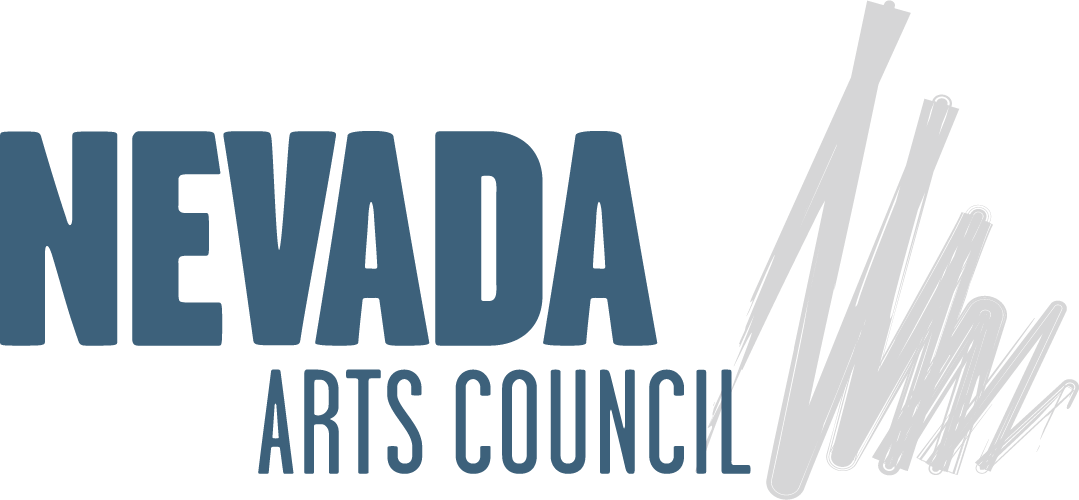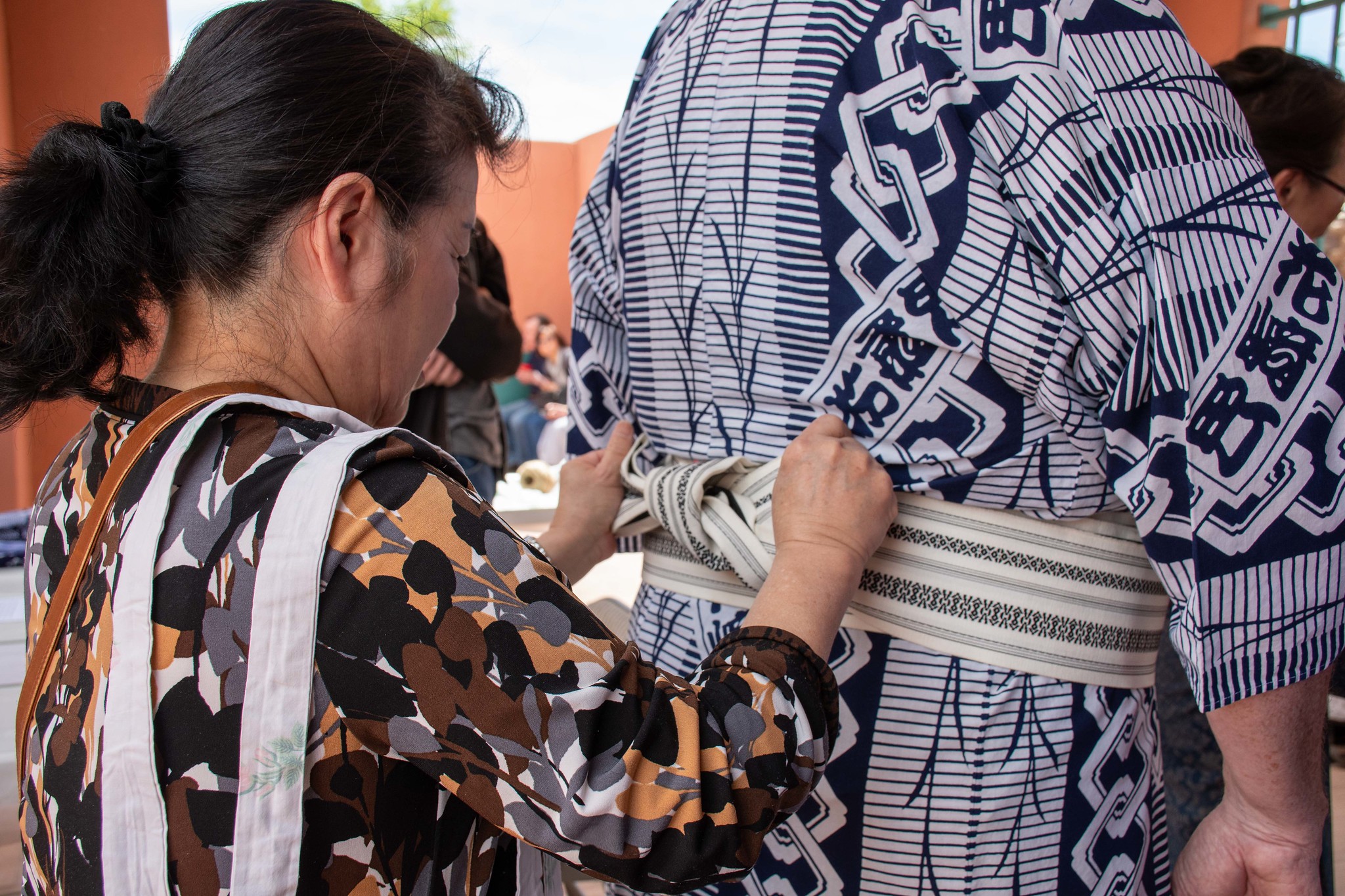Folklife PUBLICATIONS
Since the 1990s, the Nevada Folklife Program has produced 15 publications including gallery notes, essays, and more. View the online directory and digital editions of publications below.
Different Hairs On The Same Dog: The Work of a Public Folklorist Meg Glaser, Andrea Graham, and Barbara Mackey. Western Folklife Center, 1999.
As Blanton Owen so colorfully put it with his “hairs on the dog” metaphor, a folklorist looks at the world through the lens of human creativity in all its manifestations and contexts. This
publication and its accompanying exhibit seek to show what a folklorist does in his or her work, to share the sense of discovery and beauty as a folklorist experiences them, and to convey the
importance of folk culture in all our lives. The work of folklorists in general will be explored through the words and photographs of one in particular. Blanton Owen was raised in Tennessee, received his MA in folklore from Indiana University in 1977, and worked for eight years in various parts of the south before moving to Nevada in 1985 to become the first Folk Arts Program Coordinator for the Nevada Arts Council. After five years in that job, he left to work as a freelance and consulting folklorist, oral historian, archaeological technician, and commercial pilot. Those jobs took him all over the west, but his deepest work lay in Nevada and the Great Basin. Blanton died in June of 1998 at the age of 53 when his plane crashed while he was working on an archaeological project in Washington State. He left a great legacy of field documentation, writing, and public presentation of thefolk cultures of the region. Available as a pdf for download.
Enduring Traditions: The Culture and Heritage of Lake Tahoe Driving and Walking Tour. Jeanne Harrah Johnson and Penny Rucks, 2nd edition, 2012.
This 72-page guidebook points the way to the area’s unique sites of natural, cultural and artistic interest. Go off the beaten path—learn about the prehistory, history, and contemporary cultures of American’s largest alpine lake! Researched and written by cultural anthropologist Penny Rucks and folklorist Jeanne Harrah Johnson, this guidebook is a great resource for anyone planning a visit to Lake Tahoe. The tour is divided into ten thematic segments and features three driving and walking routes, a timeline, map, and calendar of events, suggested reference materials, and listings for local museums, organizations, festivals and attractions. This edition of Enduring Traditions: The Culture and Heritage of Lake Tahoe, Nevada, Driving and Walking Tour is available in pdf format as two 20-page documents to download.
Handbook for Nevada Folk and Traditional Artists. Patricia A. Atkinson, 2011.
This 120-page full-color publication provides information on business, marketing, performance, and teaching topics to assist artists who are interested in professional development and entrepreneurial skills. While focusing on folk and traditional arts, the Handbook contains information useful to any working artist. The Handbook is available in print and as a pdf for download.
Handed Down: Nevada’s Living Folk Arts 1988 -1998. Andrea Graham, 1999.
Folk arts are part of a community’s heritage. They have been shared within that group, whether it is ethnic, tribal, religious, familial, occupational, or regional, and they express important values, beliefs, and esthetics of that group. But folk arts forms aren’t perpetuated automatically or unthinkingly, and it takes work, time and understanding to keep them alive and vital. That dedication comes from individuals who choose to learn, perfect, develop, and pass on an art form as part of their culture. Handed Down chronicles the first ten years of the Nevada Folk Arts Apprenticeship Program. Available as a pdf for download.
Every two years, the Folklife Program contributes an exhibit to the Traveling Exhibition Program of the Nevada Touring Initiative. Galley Notes from the following exhibits are available in printed form while supplies last, and as pdfs for download.
• Family Flowers: Traditional Embroidery from Southern Mexico (English and Spanish)
• Mountain Picassos: Basque Arborglyphs of the Great Basin
• One Is Sil ver, the Other Is Gold: Twenty-Five Years of Folk Arts Apprenticeships
• What Continues the Dream: Contemporary Arts and Crafts from the Powwow Tradition
Field Survey Projects in Digital Format
In a High and Glorious Place: A Survey of Folklife in Lincoln County, Nevada, 1987
Blanton Owen worked with contract folklorist Mike Luster and photographer Debbie Nolan to identify, document, and present folk traditions discovered in Lincoln County, Nevada. Their words and pictures trace the contours of a rich folk heritage. The original publication, long out of print, has been revised, expanded, and reformatted to produce a digital edition – a snapshot of Lincoln County, Nevada as the folklorists found it in 1987.
Lander County Line: Folklife in Central Nevada, 1988
This essay in words and pictures by Andrea Graham and Blanton Owen was the second survey project conducted by the Folklife Program of the Nevada State Council on the Arts. Andrea Graham spent 25 days and nights documenting Lander County’s traditional life. The publication is a condensed and edited version of her field diary, illustrated with photographs of folk cultural artifacts including houses, horse gear and braided rugs, and activities such as McCarty or mecarty making (from the Spanish “mecate”) and cow-doctoring.
Songs for Asking: Perspectives on Traditional Culture among Nevada Indians. Nicholas Vrooman,
1997.
Folklorist Nicholas Vrooman visited every reservation and Native American community in Nevada to gather information about cultural activities, programs, and services, and to identify and document artists and culture bearers he encountered. Along the way he discussed the need to protect and encourage the cultural health of Native communities with tribal members, artists, and leaders in the communities he visited. Conversations took place in tribal offices, private homes, public houses, on the streets, and in the fields. Many serious, insightful, and profound perceptions that were shared with Vrooman as he made his way around the state are incorporated into this report.
White Pine County: Where the Great Basin Highway Meets the Loneliest Road in America.
Andrea Graham, 2003.
Andrea Graham encountered a surprising variety of people, communities, and traditional arts as she visited rural White Pine County communities in 2001 and 2002. She surveyed Western Shoshone, Basque, Greek, Yugoslavian, Japanese, and Italian communities; and explored occupational traditions including mining, ranching, railroading, and public lands management. “It is truly not easy to live here, so those who do are doing it on purpose, and often despite varying degrees of hardship,” she wrote. “It is the marriage of people and place, the human presence on the land, and the unique mix that happens in one particular spot, that defines these lives.”

